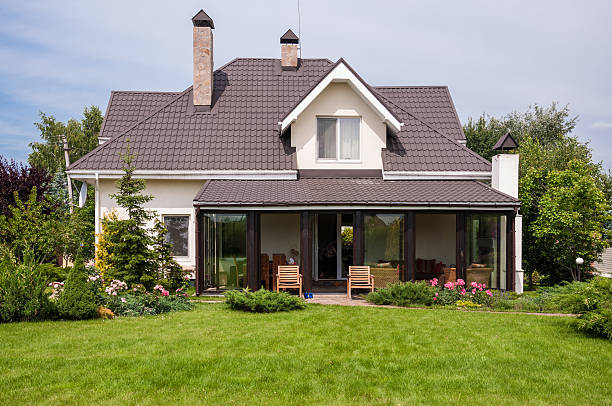Severe storms in Michigan can cause significant damage to roofs, leaving homeowners scrambling to prevent further destruction. High winds, heavy rain, hail, and fallen tree branches can create leaks or structural issues that require immediate attention. Knowing the emergency roof repair steps can help you take quick action to protect your home while waiting for professional repairs.
This guide will walk you through what to do after a storm, how to assess roof damage, and when to call for professional Emergency Roofing services.
Step 1: Ensure Safety First
Before inspecting your roof, prioritize safety. Storm damage can leave unstable structures, exposed electrical wires, and hazardous debris.
- Stay indoors if there are downed power lines or active storms.
- Use caution when walking around your property to avoid fallen branches or broken shingles.
- If you suspect significant structural damage, evacuate and call emergency services.
Once it’s safe, you can assess the damage and determine the next steps.
Step 2: Assess Roof Damage from the Ground
Climbing onto the roof after a storm is dangerous. Instead, inspect your roof from the ground using binoculars or a camera. Look for:
- Missing, cracked, or curled shingles.
- Dents or holes caused by hail or fallen debris.
- Water stains on exterior walls, which could indicate leaks.
- Damaged flashing around chimneys, vents, and skylights.
- Sagging or warped roof sections.
Inside your home, check ceilings and attic spaces for water leaks, damp insulation, or sunlight shining through gaps in the roof.
Step 3: Prevent Further Water Damage
If you spot leaks, take immediate steps to minimize interior water damage:
- Place buckets or containers under leaks to catch dripping water.
- Use towels or tarps to protect furniture and flooring.
- If possible, cover small holes in the attic with waterproof tarps or plastic sheets.
These temporary measures help control the damage until professional Emergency Roofing repairs can be completed.
Step 4: Cover Exposed Areas with a Tarp
If your roof has a large hole or missing shingles, covering it with a tarp can help prevent additional water infiltration. Here’s how to do it safely:
- Use a heavy-duty, waterproof tarp large enough to extend beyond the damaged area.
- Secure the tarp with wood planks or nails, making sure water flows off the roof rather than pooling.
- Avoid climbing onto the roof unless absolutely necessary—professional roofers have the proper equipment and safety training.
Temporary coverings can prevent leaks from worsening until experts assess and repair the damage.
Step 5: Document the Damage for Insurance Claims
Taking photos and videos of the storm damage is essential for insurance claims. Be thorough and capture:
- Visible damage to shingles, flashing, and gutters.
- Interior leaks, water stains, or structural issues.
- Fallen trees or debris impacting your roof.
Contact your homeowner’s insurance company as soon as possible. Provide documentation and request an inspection to determine coverage for repairs.
Step 6: Call a Professional Roofing Contractor
While temporary fixes can help, only professional roofers can fully restore your roof’s integrity. A qualified Emergency Roofing contractor will:
- Conduct a thorough roof inspection to assess the extent of the damage.
- Provide emergency repairs to prevent further water damage.
- Work with your insurance provider to streamline the claims process.
- Offer long-term solutions to strengthen your roof against future storms.
Hiring a local Michigan roofing contractor like Melvin Belk Roofing ensures you receive expert service from professionals familiar with the region’s weather challenges. Our team provides fast, reliable emergency roofing repairs to protect your home from further damage.
Preventing Future Roof Damage
While storms are unpredictable, there are proactive steps homeowners can take to minimize future damage:
- Schedule regular roof inspections to catch small issues before they worsen.
- Trim trees around your home to reduce the risk of falling branches.
- Ensure gutters and downspouts are clear to prevent water buildup.
- Choose impact-resistant roofing materials designed for Michigan’s climate.
- Reinforce roof flashing and seal vulnerable areas around vents and chimneys.
Preventative maintenance can extend the lifespan of your roof and reduce the need for emergency repairs.
Final Thoughts
Storm damage can be overwhelming, but knowing the emergency roof repair steps can help protect your home from further destruction. Prioritizing safety, assessing the damage, and calling a professional roofer are the most important actions you can take after a storm.
For reliable Emergency Roofing services in Michigan, contact Melvin Belk Roofing to restore your roof and safeguard your home from future weather events.
Frequently Asked Questions
What should I do if my roof is leaking after a storm?
Place a bucket under the leak, move valuables away from the affected area, and use a tarp or plastic covering to prevent further water damage. Then, contact a professional roofer immediately.
Can I inspect my roof myself after a storm?
It’s best to assess the damage from the ground using binoculars. Climbing on a damaged roof can be dangerous, so it’s safer to call a roofing professional for an inspection.
Does homeowner’s insurance cover storm damage to my roof?
Most insurance policies cover storm-related roof damage, but coverage depends on the extent of the damage and your policy details. Document the damage and contact your insurance provider for guidance.
How quickly should I get roof repairs after a storm?
Emergency repairs should be done as soon as possible to prevent further damage. If left untreated, leaks can cause mold growth, structural issues, and expensive repairs.
What type of roofing material is best for storm resistance?
Metal roofing, impact-resistant shingles, and reinforced asphalt shingles offer excellent durability against storms and high winds. A roofing contractor can recommend the best option for your home.
Can I prevent roof damage before a storm?
Yes. Regular roof maintenance, clearing gutters, trimming nearby trees, and reinforcing weak areas can help reduce the risk of storm damage.










